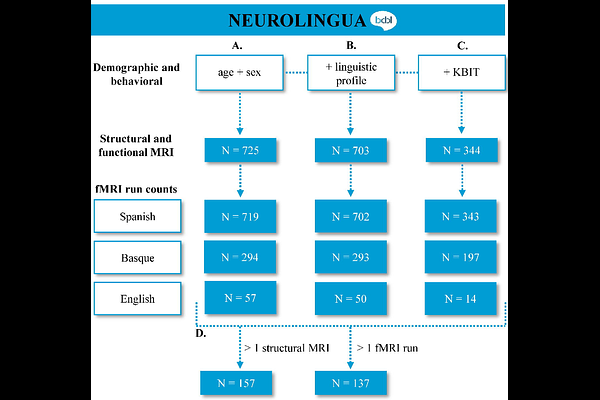NEUROLINGUA: A Neuroimaging Database Tailored to Unravel the Complexity of Multilingual Comprehension

NEUROLINGUA: A Neuroimaging Database Tailored to Unravel the Complexity of Multilingual Comprehension
Quinones, I.; Carrion-Castillo, A.; Diez-Zabala, I.; de Frutos-Sagastuy, L.; Costello, B.; Carcedo, D.; Manso-Ortega, L.; Slivka, M.; Sanchez, A.; Schüller, A.; Caballero Gaudes, C.; Paz Alonso, P. M.; Carreiras, M.
AbstractThe neural mechanisms underlying language processing involve a well-defined brain network, including mainly left perisylvian areas. Yet, the extent of its individual variability remains largely unexplored, particularly in bilingual and multilingual contexts. Differences in linguistic profiles (e.g., age of acquisition, exposure, proficiency) provide an opportunity to assess how network topology adapts to sociolinguistic factors. To address this, we developed NEUROLINGUA, a comprehensive database of functional and structural MRI data, enriched with sociodemographic, sociolinguistic, and behavioral information. It includes 725 healthy individuals aged 18-82 immersed in a Basque-Spanish multilingual environment, ranging from near-monolinguals to highly proficient multilinguals. Participants completed a functional MRI language localizer with both auditory and visual comprehension tasks, enabling cross-modal comparisons. Additionally, this localizer included sentences involving arithmetic problem-solving. Exploratory analyses confirmed associations between structural MRI, sociodemographic, and cognitive measures. Functional MRI validated NEUROLINGUA\'s capacity to localize the language comprehension network and capture linguistic profile effects. This integrative dataset offers an unparalleled resource to investigate the factors influencing language network adaptability and variability in diverse sociolinguistic contexts.